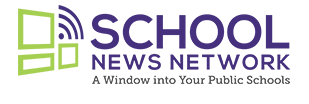Childhood Apraxia of Speech (CAS) is a rare but complex speech disorder that affects how children plan and coordinate the movements necessary for speaking. Teachers and caregivers play a crucial role in supporting children with CAS by recognizing the signs early and ensuring access to speech therapy and specialized interventions. For educators, pursuing Online Special Education Courses can provide the skills and knowledge needed to effectively support children with speech and communication challenges in inclusive classrooms.
What Is Childhood Apraxia of Speech?
CAS is a motor speech disorder where the brain struggles to plan and execute the precise movements of speech. While the child knows what they want to say, their brain has difficulty coordinating the muscle movements required to produce those sounds.
Key characteristics:
- Inconsistent speech errors (a child may pronounce the same word differently each time).
- Difficulty sequencing sounds or syllables.
- Problems with prosody (the rhythm and intonation of speech).
- Trouble moving smoothly from one sound, syllable, or word to another.
Children with CAS may have strong comprehension skills but feel “trapped” when trying to express themselves verbally. This disconnect between understanding and speaking can lead to frustration, behavioral challenges, or social withdrawal if left untreated.
Causes and Risk Factors
One of the most challenging aspects of Childhood Apraxia of Speech (CAS) is that its exact cause is not always clear. Researchers continue to study the underlying reasons, but several potential causes and risk factors have been identified.
Here are a few of them:
- Neurological Factors
CAS may occur when there are disruptions in the brain pathways responsible for planning and coordinating speech movements. In some children, it may be linked to brain injury, stroke, or certain neurological disorders. Even without a major injury, subtle differences in brain function may affect how speech signals are transmitted.
- Genetic Influences
Genetics may play a significant role. CAS sometimes runs in families, suggesting a hereditary component. Additionally, researchers have connected CAS to certain genetic syndromes and conditions, such as galactosemia, Down syndrome, or 16p11.2 deletions, which often present with communication challenges.
- Developmental and Co-Occurring Conditions
CAS can appear alongside other developmental challenges. Children with autism spectrum disorder (ASD), global developmental delays, or learning disabilities may be more likely to exhibit signs of apraxia. This overlap can complicate diagnosis, as symptoms may blend with or mimic other conditions.
- Environmental and Prenatal Factors
In rare cases, complications during pregnancy, premature birth, or low birth weight may increase the risk of CAS. Exposure to toxins, infections, or metabolic conditions during development could also play a role, though these links are not yet fully understood.
- Unknown Causes
For many children, no clear cause is identified. CAS can occur without any associated medical, genetic, or neurological condition. This unpredictability is why early recognition of symptoms and timely intervention are critical for effective treatment.
How Is CAS Diagnosed?
Diagnosing early signs of childhood apraxia of speech in toddlersrequires specialized evaluation by a speech-language pathologist (SLP).
The process often includes:
- Speech Assessment
The speech-language pathologist (SLP) listens to how the child pronounces sounds, words, and phrases, noting errors or inconsistencies.
- Oral Motor Exam
The SLP checks the child’s ability to move the lips, tongue, and jaw to rule out muscle weakness as the cause of speech problems.
- Consistency Testing
The child is asked to repeat the same words to see if pronunciation changes, which is a key sign of CAS.
- Prosody Analysis
The SLP evaluates rhythm, stress, and intonation to identify unusual speech patterns often linked to apraxia.
Because CAS symptoms can overlap with other speech disorders, accurate diagnosis is crucial to ensure the right treatment plan.
Treatment Options for Childhood Apraxia of Speech
The good news is that with early intervention and consistent therapy, many children with CAS make significant progress. Treatment usually involves intensive, individualized speech therapy rather than generalized programs.
1. Intensive Speech Therapy
Children with CAS benefit from frequent, short, and focused therapy sessions (often 3–5 times per week). Therapy emphasizes repetitive practice of sound sequences and words to help the brain “retrain” pathways for speech production.
2. Multisensory Cues
Therapists often use visual, tactile, and auditory cues to guide children. For example, hand signals, mirrors, or apps may help children coordinate speech sounds more effectively.
3. Augmentative and Alternative Communication (AAC)
While working on speech, some children use AAC tools such as picture boards, communication apps, or sign language to reduce frustration and encourage communication. These are stepping stones—not replacements—for spoken language.
4. Parental Involvement
Parents are trained to practice speech exercises at home, reinforce progress, and provide a supportive environment for communication.
5. Supportive Therapies
In some cases, occupational or physical therapy may be recommended if CAS co-occurs with other developmental challenges.
The Role of Educators and Schools
Children with CAS may enter preschools or primary schools with ongoing therapy needs. Teachers play a critical role in creating supportive environments that accommodate their communication difficulties.
Classroom Strategies:
- Using visual aids and written instructions to complement speech.
- Allowing extra time for children to express themselves.
- Encouraging peer support and reducing stigma.
- Collaborating closely with parents and speech therapists.
Educators who undergo training in special education are better equipped to implement these strategies and recognize when additional interventions are needed.
Bottom Line
For teachers and caregivers, awareness and training are key to fostering inclusive classrooms where every child feels seen and heard. Investing in professional learning, such as Special Education Courses, equips educators with the tools to support children with CAS effectively, from recognizing early signs to implementing supportive practices in school.By combining speech therapy, family involvement, and teacher training, we can give children with CAS the voice they deserve—one that expresses their ideas, emotions, and potential with clarity and confidence.




